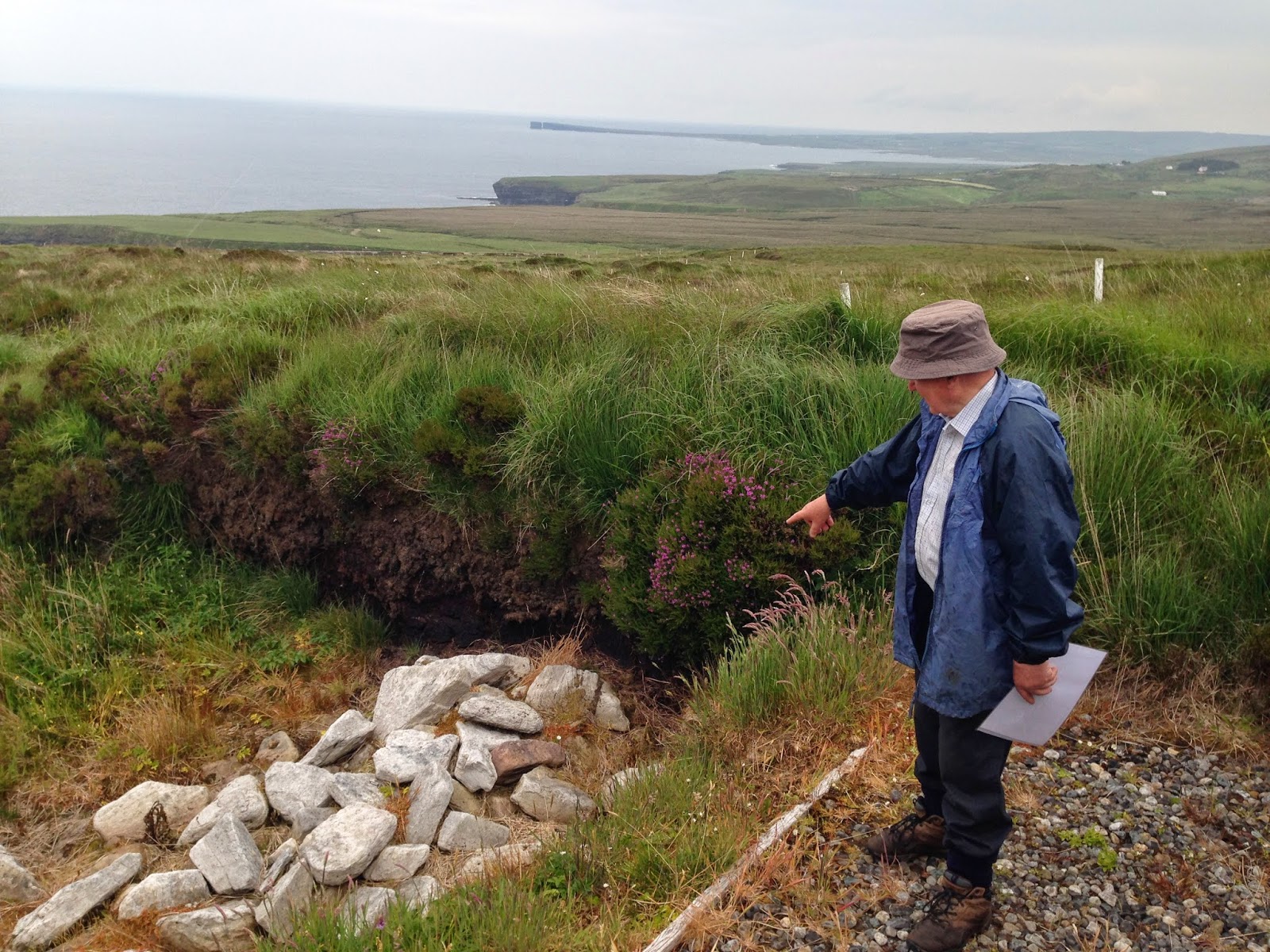Last Wednesday we took off a half-day to visit Ceide Fields, a 5000+ year old intact landscape of stone walls and field systems, as well as dwelling areas and megalithic tombs. It is the most extensive Stone-Age monument in the world. We were very fortunate to have a chance to tour this important archaeological site, and its visitor center with Seamus Caulfield, the archaeologist who founded the center, and leads ongoing research into th eviednce of botany, and agricultural and social structure of its inhabitants, at a nearby research center in Belderrig, and whose father discovered the stone walls, buried beneath the wild boglands, when he was cutting turf for fuel.
Ceide Fields is located along dramatic coastal cliffs, and there is a wonderful long view of the ocean. The Ceide Fields Visitors Center is an architectural monument in its own right, and has won numerous design awards. Its pyramidal glass skylight, with surrounding earth berm both marks the prominent site, but fits perfectly into its landscape setting.
It was a perfect atmospheric gray drizzly day for the visit...
Ceide Fields is located along dramatic coastal cliffs, and there is a wonderful long view of the ocean. The Ceide Fields Visitors Center is an architectural monument in its own right, and has won numerous design awards. Its pyramidal glass skylight, with surrounding earth berm both marks the prominent site, but fits perfectly into its landscape setting.
It was a perfect atmospheric gray drizzly day for the visit...
Prof. Seamus Caulfield greets us at Ceide Fields Visitors Centre
Ceide Fields Director, Marta, welcomes the group, and shows an ancient fossilized pine tree that was found in the bog, and which is the centerpiece of the visitors center.
Seamus shows the layers of peat, which mark the layers of millennia in the strata of the bog. One billion grains of pollen can be found in one gram of soil, and researchers are studying this to find out about ancient flora and agriculture.
the intact remnants of 5000 stone fence walls--the Stone Age people kept cattle for dairy!








No comments:
Post a Comment